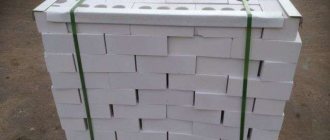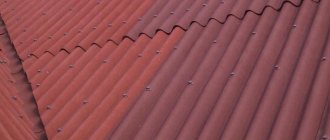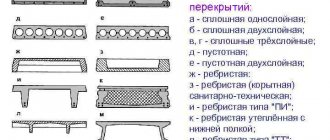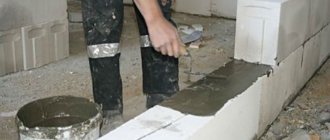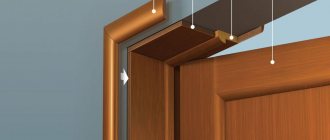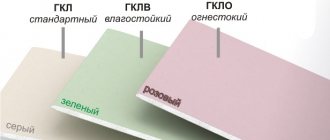Published: 02.26.2012 Category: Materials and technologies Views: 29276
Polyurethane foam. Types, properties and features
Often during construction or repair work there is a need for a material that can fill a gap, hole, joint or seam. This need arises when installing windows and doors, as well as other elements used in construction. The best option for solving these problems would be polyurethane foam . This article will provide detailed information on how to choose the necessary polyurethane foam, what you should pay attention to, and which of the many brands on the market to give preference to.
What is one-component polyurethane foam?
Based on their composition, there are two types of polyurethane foam: one-component and two-component. The first one is much more common, and its use is much simpler and more convenient. The one-component foam is packaged in an aerosol package and is essentially a polyurethane sealant. In fact, the substance in the cylinder is a mixture of several substances. The foam base is synthesized from an isocyanate and a polyol, the resulting substance being a prepolymer. The chemical reaction occurs partly inside the cylinder, but mostly on contact with air, resulting in the formation of polyurethane. The foaming agent for any of the polymers will be a mixture of liquefied gases (butane, isobutane, propane), which is called a propellant. Thanks to the same mixture, pressure is created under which the prepolymer leaves the container.
When leaving the container, the composition turns into foam due to contact with air and increases in volume by 20-40 times. Thanks to its rapid expansion, this foam can fill even the most difficult to reach cavities. Over a short period of time, the mass hardens due to the moisture contained in the air. To increase the speed of hardening, you can also moisten the surface on which the composition will be applied. It takes about a day for the composition to complete the chemical reaction - during this time the foam hardens, turning into a chemically stable polyurethane. The great advantage of this substance is its strength, resistance to wet environments, and harmlessness. Due to its porous structure, polyurethane is an excellent insulator.
High-quality polyurethane foam does not flow down the surface, but is well fixed to it. The finally hardened foam mass does not become brittle and brittle even when exposed to low temperatures.
You can use polyurethane foam when working with almost any building material: concrete, stone, iron, wood, plastic. This allows it to be used in the widest range of construction and installation works: installation of windows and doors, heat and sound insulation, sealing of joints, cracks, and drainage systems, as well as, if necessary, sealing of individual elements.
There are now many manufacturers of polyurethane foam on the market, but it is better to give preference to well-known brands:
- Henkel (Makroflex brand, Finland)
- Bison International (Netherlands)
- Den Braven (Netherlands)
- Soudal (Belgium) international concern Tremco illbruck
- Selena Group (trademarks Tytan, Hauser, Poland)
- Bau Master (Estonia)
- Domos (Estonia)
- Penosil (Estonia)
- Okyanus Kimya (trademark Soma Fix, Türkiye)
- Hermetic-Trade (trademarks Master Gvozd, CHIP, Putech, Russia)
- ULTIMA (Russia)
Please note that high-quality polyurethane foam, when applied, is immediately fixed to the surface and does not flow down it. Another indicator of quality is strength: even when exposed to low temperatures, high-quality polyurethane foam does not break or crumble.
An excellent domestic brand in the production of polyurethane foams can be called ULTIMA. Thus, professional summer foam with increased yield meets all the requirements for similar products, while being an affordable product.
Recommended foam for:
- any installation and construction work of large volumes;
- structures requiring high precision and lack of susceptibility to deformation during operation;
- ensuring the tightness of connections.
Due to its high adhesion to various materials, the range of uses of ULTIMA foam is very wide. But, like any other polyurethane product, it has low adhesion to some types of plastics, such as polyethylene and polypropylene, fluoroplastic and the like.
Popular polyurethane foam
This is an excellent product used in installing windows and doors in openings, foaming cracks and joints between building elements. After complete hardening, the foam can withstand repeated cycles of sudden temperature changes, high humidity and great physical activity.
The only disadvantage of polyurethane foam is the instability of the material to ultraviolet radiation, but this is a feature of any polyurethane foam. Therefore, in places exposed to sunlight, additional surface treatment is required.
The advantages of ULTIMA polyurethane foam are more significant:
- increased output volume up to 65 liters, which makes it possible to use for large-scale work;
- secondary expansion of up to 25% indicates minimal mobility of elements in the structure;
- forms a dense, finely porous structure when completely hardened;
- does not flow and does not settle, that is, suitable for vertical foaming;
- requires the use of a gun, which affects the ease of application.
ULTIMA summer foam adequately copes with all its tasks.
Choice
According to experts, the most popular and high-quality professional mounting foams are:
- Soudal Gun.
- Penosil GoldGun.
- Tytan Professional.
These types of foam are characterized by low secondary expansion, good viscosity and large output volume. Also, this product has a fairly long service life. Most experts recommend using one of these types of polyurethane foam to perform any important work.
Polyurethane foam and its properties
The main property of polyurethane foam, which determines its value as a building material, is its ability to increase many times in volume , as discussed above. The degree of expansion varies from 10% to 60% for household polyurethane foam produced for home use, and from 180% to 300% for professional ones. This coefficient is influenced by various factors, such as air temperature and humidity, the rate of foam release from the container, the type of application (using an adapter or a gun) and even, oddly enough, the experience and abilities of the person who works with the foam.
When carrying out work, a container with household and professional mounting foam should be held “upside down” so that the light propellant gas can better mix with other mounting components and displace them from the container.
The packaging usually indicates the maximum possible foam yield. However, this volume is achievable only if all instructions are followed, as well as favorable environmental conditions.
When calculating the volume, it is also worth considering that foam expansion is of two types: primary and secondary. The primary occurs immediately upon exiting the container, while the secondary occurs before the completion of the polymerization process. Secondary expansion for high quality products is 20 - 30%. This fact must be taken into account when filling cracks and cavities: approximately 1/3 of the space should remain hollow so that the foam fills them, but does not go beyond.
There are also mounting foams with a lower coefficient of secondary expansion, which are excellent for installing windows and doors and guarantee no deformation in the seam. After all, the lower the secondary expansion, the less the foam increases in volume after application, which is especially important when installing structures where excessive foam pressure is not acceptable. Such products include summer professional polyurethane foam with increased yield from PENOSIL. PENOSIL Gold Gun 65 is also used in construction, when installing communications, installing windows, doors, and sealing structures.
The uniqueness of the composition of this product reveals certain advantages:
- fine porosity of polymerized foam - affects the mechanical strength of the connection or seal, as well as other performance properties;
- the foam yield, up to 65 liters, is improved not only quantitatively, but also qualitatively - the foam is supplied evenly and stably;
- secondary expansion up to 15%, which is much lower than the stated optimal parameters of professional polyurethane foams (20-30%);
- short period of time from application to polymerization;
- environmental friendliness of the composition - does not harm both health and the environment after installation work;
- good heat and sound insulation properties;
- high adhesion to most building materials.
Pay attention to the features of the foam that will help avoid problems during installation:
- Low secondary expansion will not allow filling voids in the structure; for this you need to use household foam.
- In addition, a gun is required to use professional foam.
- The hardened surface of any mounting foam in open areas requires secondary treatment to protect it from sunlight.
Advice. When working with foam, it is better to hold the container vertically down. This will allow the lighter gas propellant to mix with the rest, displacing the foam from the container in which it is located. For more efficient mixing of gases, the cylinder should be shaken from time to time. To avoid leakage of propellant gas, store cylinders in an upright position at an ambient temperature between 5ºC and 25ºC.
The density of foam that has undergone the process of secondary expansion and has finally hardened ranges from 15-25 kg/m³ for professional ones to 25-35 kg/m³ for household ones. It is impossible to say which indicator is better: it depends on your goals and objectives. The denser the resulting product, the lower the foam density is preferable. However, in some situations, high-density foam is preferable: for example, for seam insulation. In this case, the quality of the foam will be determined by the uniformity of its structure: all bubbles should be approximately the same size; otherwise, the use of the material will not give the desired effect.
| Hardened high-quality polyurethane foam has a uniform fine-cell structure | Poor foam has a structure consisting of many large cells with large voids, inside which uncured foam may remain |
In addition to expanding after leaving the container, polyurethane foam can also shrink . However, shrinkage should in no case be more than 5%, otherwise you will have to admit that you purchased a low-quality product. Large shrinkage can lead to deformation of the foam mass, and sometimes to ruptures, which, of course, is unacceptable.
A property such as adhesion characterizes the ability of foam to adhere to other surfaces . It is measured by moving the prototype and measuring the disruption of adhesive contact. The norm of foam shear resistance is about 0.4 - 0.48 MPa. Please note that the foam mass cannot stick to materials with an inert surface, such as Teflon, polyethylene, etc. However, most materials used in construction have good contact with polyurethane foam.
When foaming narrow crevices and small cavities, it is easier to dose the foam jet using a gun
To prevent loads from destroying the structure of the polyurethane foam, after hardening it must remain sufficiently elastic and, after eliminating the deforming factor, return to its previous position. This is important, especially considering the tendency of new houses to settle over time. High-quality material will easily withstand this process, will not crumble and will retain all its properties.
For humans, the foam is harmless: there are no fumes from it. The only case when it can release toxic substances is combustion, but the ignition temperature of polyurethane foam is at least 400 ºС.
An important indicator of quality is the color of the polyurethane foam. It should be light yellow. When exposed to direct sunlight, the stump darkens, acquiring an orange or brown tint. This is due to UV radiation destroying the foam structures. If this factor is not excluded, the foam will become brittle and lose most of its properties. However, the problem can be solved simply by plastering the area: this way the effect of light is neutralized, and the foam will serve you for a very, very long time.
Don't forget about safety precautions! When working with polyurethane foam, do not point the dispenser at people or animals; ventilate the room in which you are working. Protect your eyes with a special mask. It would also be a good idea to use a respirator or at least a cotton-gauze bandage to protect the respiratory tract.
Now about the types of MP (there are two of them)
Household option
Household and professional. The main external difference is the method of exit from the can.
Household. The external sign of a household MP is a plastic nozzle (adapter tube) attached to the cylinder. Well, if you look closely, the initially invisible signs include: a smaller volume of the working mixture, greater expansion (secondary), certain inconveniences during work and “offensive” disposability. Then the foam in the tube dries up...
Professional. The first sign here is a mount designed for use only “in tandem” with a mounting gun. It is more convenient and better to work this way, and special solvents are available to clean MP residues. Although, I practically never use them (I always finish the cylinder and insert a new one). A charged cylinder sits with the gun for half a year (in winter) and there are no problems...
On the “Pro” canister, there is a ring valve that matches the thread with the gun adapter. The working mixture, after pressing the trigger, is activated by gas pressure and rushes along the rod (barrel), dissipating through the outlet valve (nozzle).
In this case, the substance under pressure penetrates into the cavity of the tool and is restrained only by a valve controlled by a trigger. The adjusting screw allows you to control the pressure. The foam yield from one household cylinder is significantly less than that of a professional one. And the expansion (after the release of the reagent), on the contrary, is greater.
Two-component polyurethane foam
Above we mainly discussed one-component foams. However, there are also two-component ones that must be mixed in a strictly defined proportion immediately before use. To do this, you must have a special mixing gun, or a special installation with a gun.
The difference between two-component foam is faster hardening , as well as good polymerization , regardless of air humidity. For example, excess foam produced by Makroflex Rapido (Henkel), lSoudafoam 2K (Soudal) or llbruck 2K (Tremco lllbruck) can be cut off within 10 minutes after application. The undoubted advantage of two-component foam is its greater yield . However, given the complexity of use and higher price, it is advisable for professionals to work with them.
Which polyurethane foam to choose, household or better professional?
Undoubtedly, professional polyurethane foams are made from higher quality reagents. However, in general, household and professional foams are similar in composition, and both the first and the second are perfect for many types of work. In addition, for small jobs, containers with household foam will sometimes be more convenient: they are smaller in volume, and are also equipped with an adapter, thanks to which the foam can be applied locally to small areas (after completion of the work, this adapter must be rinsed with water).
The container with professional foam has a special applicator ring onto which the mounting gun is screwed. This device allows you to dose the foam output and regulate the pressure and power of the jet. The gun also has a long nose that penetrates even hard-to-reach places. Unfortunately, this device sometimes costs more than the cylinder itself. Its cost reaches 4000 rubles.
Cylinders with professional foam are larger in volume and have a significantly higher yield. They are used by finishers, builders and other specialists who need to use foam often and in large quantities.
Having foamed the joint between the window and the concrete enclosing structure of the balcony, the foam is given time to harden. Then, using a sharp knife, carefully cut off the excess foam mass (b) and plaster the surface (c), preparing it for final painting.
One example of a popular professional foam is summer REMONTIX PRO 65, the new formula of which allows you to achieve maximum filling capacity. The volume of foam in the container is 850 ml, which leads to a final fine-pored product yield of up to 65 liters. The foam has rapid polymerization, which significantly reduces installation time.
Clear advantages also include:
- secondary expansion is within acceptable limits for professional products, it is no more than 25%;
- high filling capacity;
- The universal operating temperature range for summer foams is from 5 to 30 ⁰С above zero.
The combination of good filling power and gun application technology results in excellent results from the use of REMONTIX PRO 65.
This mounting foam is recommended for:
- installation work in the construction and communications sector;
- fastening panels, polymer plates and other elements;
- insulation of structures, including building facades;
- formation of sound insulation;
- formation of a hydrobarrier;
- filling voids.
REMONTIX PRO 65 has features standard for polyurethane foams:
- deteriorates over time under the influence of ultraviolet rays, therefore they require additional processing;
- darkens and changes color when exposed to light;
- requires cutting off the protruding part after complete polymerization;
- complete polymerization time is 24 hours.
REMONTIX PRO 65, being a seasonal product, requires strict adherence to the rules of its use and storage, including maintaining temperature conditions. Hypothermia and overheating of containers, even short-term, are not desirable. This can lead to a significant change in performance properties.
Features of using polyurethane foam in winter
Construction and installation work is often carried out in conditions that are not the most suitable for this, including at low temperatures. For such cases, manufacturers have developed polyurethane foam intended for use in winter. It hardens at lower air humidity, and can also be used in a wider temperature range. Its disadvantage is weaker expansion.
The main advantage of winter polyurethane foams is the extended range of operating temperatures, and therefore the period of construction work
If work needs to be carried out urgently, and special winter foams are not available, workers have to resort to tricks. For example, they can moisten the work surface with a spray bottle. However, such methods should be resorted to as a last resort: it would be more rational to purchase a special compound or wait for a more favorable time to carry out the work.
It is also worth considering that even when working with winter foam, the temperature of the cylinder should be about 20ºC. If the cylinders were stored in a cooler place, they must be brought to the required temperature in warm water, avoiding excessive heating (this can lead to the cylinder exploding).
The problem of choice and secrets of use
Coming to a building materials store, any non-professional will be confused: the market offers the buyer polyurethane foams with a significant variation in both price and quality. How to make a choice?
First of all, you need to know for what kind of work the foam will be used. It is preferable to fill narrow spaces with foam without too significant expansion; for wide cavities, strength will be important, without which it is impossible to hold the structure. In the second case, however, you can use a trick and fill the space with wood, brick or crushed stone, and only then use foam with a slight expansion.
The shelf life of the product is also important. It rarely exceeds 18 months. An expired product will most likely not have the declared properties. The “older” the cylinder, the more viscous the composition is inside it. This can be used if dense foam with small cells is more suitable for your needs. In any case, an expired cylinder should not only be used, but also stored at home; It is better to dispose of them at special collection points for such containers. It is strictly forbidden to throw cylinders, even fully used ones, into fire.
Over time, the composition may “disperse”: heavier components will sink to the bottom of the cylinder, while lighter components will rise. To ensure that the foam is homogeneous, shake the can for about 30 seconds before use: then the components will mix again, and the resulting composition will be exactly as the manufacturers intended. It is also worth shaking the container periodically during operation, but in this case you should not reach the point of fanaticism.
The surfaces on which you plan to apply foam need pre-treatment. It was written above that foam simply will not fall on inert materials. Therefore, make sure that the area being treated is not covered with one of these substances. The surface can be damp, in some cases it is even recommended, but excess water is also harmful. In addition, when working at subzero temperatures, you need to make sure there is no ice or frost.
A container of polyurethane foam contains flammable substances, and the foam itself can ignite when brought to a certain temperature. And as we remember, the combustion products of polyurethane foam are harmful to human health. Therefore, you should be careful when working with foam, not to carry out parallel welding or other work that could cause a spark. And of course, smoking is prohibited during work.
Polyurethane foam cleaners are designed to effectively remove uncured foam stains, treat the valve and cylinder, as well as the applicator ring and gun. This is necessary to avoid problems with foam coming out of the gun.
After finishing working with foam, pay attention to the gun (in case of professional materials) or adapter (in case of using household foam). They must be washed, otherwise the composition will harden inside and reuse of the equipment will become impossible. Sometimes this requires special formulations, in which case additional information is indicated on the cylinder itself.
About the classification of the working mixture
By component . There are one-component ones (the vast majority of them on the market) and two-component ones. Regarding the second, I will only say that their use involves mixing. This is for highly professional users (let's say - not for us). But single-component ones are for mere mortals.
According to temperature conditions . It’s like with car tires. There are summer, winter and all-season. Summer, will give the opportunity to “blow”, from = +5° to +40°, winter, from - 20°(*) to +40°
*important point: during operation, the temperature of the cylinder should not be “minus”.
Well, I already wrote above about the temperature regime for all-season use.
“The lower the temperature, the smaller the MP volume during expansion. Relatively speaking, a 300 ml cylinder, at t = +20°, will produce ≈ 27 - 30 liters. At t = 0°, about 20 - 25 l, and at - 10°, about 15 - 18 l."
According to the flammability of the working mixture
We work with foam with a balloon for a gun
There are designations on the package: B1, B2, B3. What means?
B1 – fire resistant;
B2 – self-extinguishing,
B3 – flammable.
Of course, B1 is “super” in this sense, but the price is appropriate.
A few words about the thermal insulation properties of MP. Of course, it cannot be considered as insulation (expensive), but the thermal conductivity coefficient is at a level of ≈ 0.033-0.04 W/m*k. For comparison, foam plastic ≈ 00.31 - 0.042, and mineral wool ≈ 0.045 - 0.07 W/m*k. Please do not confuse polyurethane foam with Polynor spray insulation, which is also sealed in cylinders.
And about whether the MP allows water to pass through or not. There are two negative points here. First . It does not allow water to pass through, but the hygroscopic structure is filled with liquid. That is, water collects in the pores. According to some well-known manufacturers, water absorption can reach 20%. Therefore, it cannot be used as waterproofing. Second . If the water in the pores freezes, then turning into ice and accordingly increasing in volume, it will begin the destruction (destruction) of the material.
Attention - spaghetti effect
Installers and builders have a term called the spaghetti effect. It means that the polyurethane foam is not coming out of the container correctly . As a rule, this happens when using cheap, low-quality guns, the tips of which do not open completely, as a result of which the foam comes out in a thin stream. Thus, instead of the expected thick layer of foam, something comes out that in appearance most closely resembles thin noodles, which is where the name of the effect comes from. In this case, the displacing gas is wasted, and the mass is not sufficiently saturated with oxygen and is not even foam in the network. As a result, the volume of the finished product is much less than expected, and its quality leaves much to be desired.
Semi-professional polyurethane foam
Semi-professional foam is a substance that does not require expensive guns. The release of finely porous foam from the cylinder occurs when using a special adapter (a special tube with a lever), which is put on the valve and brings it into working condition. This type of sealant is used for one-time work. The temperature of use of this material ranges from + 5 to +35 degrees. Titanium polyurethane foam is also a semi-professional type; its technical characteristics are as follows:
- Maximum capacity is 45 liters with a cylinder volume of 750 ml.
- Increased resistance to moisture and mold.
- Adhesion to a wide range of materials.
- Environmentally friendly (does not contain ozone-depleting substances), etc.
TYTAN polyurethane foam is also available in the form of seasonal sealants, that is, it comes in winter and summer. The cost of a 750 ml cylinder is 200 rubles.
How not to make a mistake when choosing polyurethane foam: main points
Before going to the store, read specialized forums, or better yet, register on them and ask for advice from “experienced” people. Professionals in their field will certainly tell you which foam is best to choose for your case. Of course, this information can also be obtained from a sales consultant, but it is not a fact that he will not praise the products from the sale of which the largest percentage will go into his pocket.
Pay attention to the appearance of the cylinders: they should not have defects, dents or chips. Otherwise, it can be assumed that the foam was stored in inappropriate conditions, which affected its quality. Pay attention to the expiration date, as well as information about the nuances of use that are indicated on the cylinder, as well as the manufacturer’s contact information - you can find a lot of useful tips on their website.
These articles may also be of interest to you:
- How to choose building materials for building a house
- Types and properties of sealants. Which sealant is better to choose?
- Material for insulating steam rooms in baths or saunas
- Installation technology for interior swing doors
Types of polyurethane foams
All types of polyurethane foams differ according to several criteria.
Mode of application
According to this principle, they differ:
- Professional polyurethane foam. Cylinders with material are inserted into a special construction gun, which dispenses the required amount of the mixture in portions. Its use is convenient due to the ergonomic handle and dispenser trigger. The main condition for the long service life of such a tool is its timely washing after each use.
- Semi-professional. This material is sprayed from a special plastic tube that fits onto the pressure lever. More suitable for solving small repair tasks.
Application temperature
Depending on where exactly and at what time of the year you plan to use polyurethane foam, you will have to decide on the appropriate type of mixture. Depending on the temperature range, polyurethane foams are distinguished:
- summer - have indicators of +5-35 ° C;
- winter - the range is -18/+35 °C;
- universal - the range of permissible temperatures is -10/+35 °C.
Important! These characteristics relate specifically to the temperature of the surfaces being treated, not the air. When determining the consumption of polyurethane foam, it is necessary to take into account: the lower the temperature, the smaller the volume of polyurethane foam will be obtained at the outlet of the cylinder.
Flammability degree
The degree of flammability of the polyurethane foam must be indicated on the cylinder. It is determined by class. The following types of polyurethane foam are available on the market:
- B1 - fire-resistant polyurethane foam;
- B2 - self-extinguishing;
- B3 - flammable polyurethane foam.
